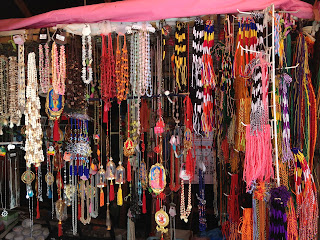Considered one of the most important religious monuments in Sri Lanka, the Koneswaram Kovil (also known as Tirukonamamalai Konesar Kovil or the Temple of the Thousand Pillars) is perched atop a rocky promontory, Swami Rock, overlooking the harbor of Trincomalee. The kovil’s primary deity is the Hindu deity Shiva, who is the Destroyer or Transformer amongst the Divine Hindu trinity. This kovil traces its roots back to as far as the 3rd century.
Over the years the temple was restored by many Sri Lankan Kings as well as Chola invaders of South India, who left their own architectural mark, creating an eclectic and unique religious monument. However the kovil was completely destroyed by the Portuguese when invading Fort Frederick, between the years 1622 and 1624. Evidence suggests that the temple was pushed over Swami Rock into the plummeting depths of the Indian Ocean below. Ancient ruins have been unearthed from underwater by famous science fiction author Arthur C Clarke, the most important find being the lingam, believed to be Swayambhu.
When my friend informed me that we would be making a day trip to Trincomalee, I insisted we visit the temple. Walking up the winding path that leads up to the Koneswaram Kovil, you are greeted with a variety of stalls selling everything from statues of Hindu deities, fresh fruit to quench your thirst and local sweets to munch on. We take off our shoes near the gate and climb up the steps leading to the temple. A massive golden statue of Shiva which was recently erected stands tall against the blue sky. I stand at the foot of the statue feeling rather overwhelmed by its size.
I am greeted by the soothing scent of incense as I walk into the temple, which is scattered with both worshippers and tourists just like me. Intricate statues of numerous Hindu deities dance across the walls of the kovil, treating the eye to an explosion of vivid colour. Legend has it that Lord Ravana (from the popular Indian epic of the Ramayana) worshipped Shiva at this very temple. As he was leaving the temple Ravana dropped his sword and so ‘Ravana Cleft’ was formed. Although I am uncertain of the accuracy of this legend, I can attest to the fact that I felt a calming presence within the safe walls of temple and the surrounding compound. I might not be Hindu, but I was certain a higher power was within our midst.
In the Shaiva tradition of Hinduism, Shiva is considered the Supreme God, whilst all other deities are lower manifestations of Shiva. According to Shaivism, Shiva has five important works including being the creator, preserver, destroyer whilst also concealing and revealing prophecies.
Wandering through the temple complex I marvel over the hands that created the complex statues and artwork that adorn the walls and at how wonderfully most of these ancient sculptures have been preserved over the decades. I can only imagine the havoc that was caused when the entire temple was invaded and destroyed. Today the kovil stands majestically, overlooking the glistening ocean. One can’t help but be enthralled by the mystical element that is associated with the history of the temple, including prophesies that have been discovered and revealed, along with all the secrets that it safely conceals.
Entrance to Fort Frederick
Colourful stalls lining the streets including a stall that sold various religious posters.
Ravanas Cleft
Golden statue of Shiva
Entrance to the kovil
The mystical Lord Ravana











can not be hindu temple as sura asura, hindu deities and raksha like ravana together.as per shaivaites shiva is shapeless formless just like water or smoks.as such shiva represent by only marks or signs.like his vehicle caws or linga.this is maha brakmana's idol. as per legends among exorcists in the Island. this place was a heavan like area or vimanaya or abode assigned to maha brakma and his 14 prajapatis or rishis grand father of first rakshaya or yakka king of lankapura assigned this place for rest in place for 14 prajapatis 's souls as per their animistic belief. locals rakshayas, yakkas, devas and naga were animists.believe in souls of every living objects and natural phenomenas like cyclones, flooding, tsunamis,earth slips so on.king kubera built 14 decagon fillers 88 riyans in heights and 100 polygon filler to represent mahabrakma and arranged them in necklace shape with 100 gon filler as pendant. in order to facilitate 14 souls of maha rishis including his grand father pulstya.it is just like myterious fillers stood in europe and south america.
ReplyDelete